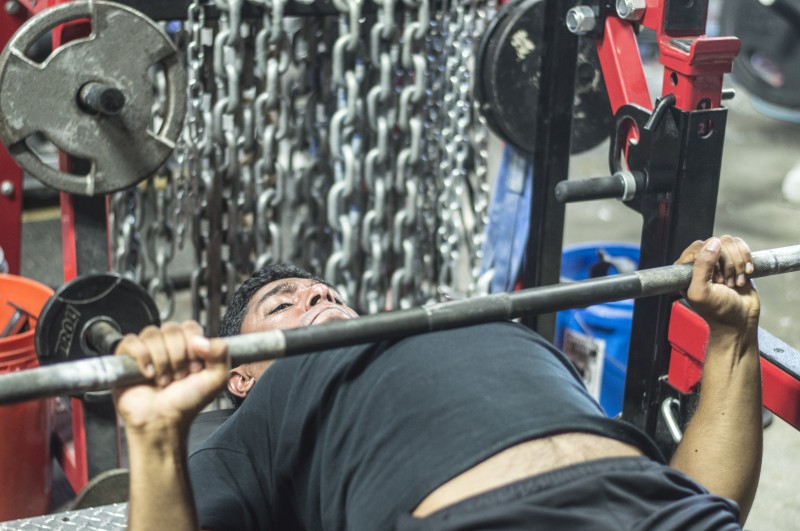
It seems like every other day a new position is created in professional and collegiate sports. The title is usually something similar to director of sport science. I'm lucky enough to have met some of these very smart people and learn from a few of them. The science that they're currently using is amazing. I ran GPS for one day on one team and I still have more data than I could ever imagine. The problem as I see it now is, how do we use this data?
When I presented my basketball coach with GPS data, he asked what I would do with the information. I said that I would collect it for two years and then make changes. He laughed and said, "I don't have two years to wait." The point I was making is that technology is moving so fast we need to catch up to what we're seeing.
Satisfaction is the Death of Desire
For those of you who don't know, that is the title of a Hatebreed album. I'm a fan of all things loud, so I love the band and the title. We must never be satisfied with what we're doing, and we must remember that before technology, we were making our athletes better every day. I remember watching Buddy Morris write workouts on a dry erase board in 1998, and his athletes got stronger. I know for a fact that Buddy has evolved and changed many of the things he does today compared to what he did almost 20 years ago. I also know that if I gave Buddy an athlete and a dry erase board, he could make that athlete better.
As I hope you can see, I love this profession and what is happening. However, I'm concerned about the young strength coaches who copy what Buddy and others are doing today (or read about what Buddy and others doing) and try to compare their Division 2 athletes to NFL athletes. Not all athletes are created the same. I think many of these coaches need to take a step back, train their athletes and then worry about the sympathetic response of the organism.
With this being said, here's a list of things that I see young coaches doing now that aren't the best for their current situation:
1. Tempo Runs
You could quote Charlie Francis all day long and I'll probably still listen to you because he knows his stuff. But I want coaches to consider whether or not their freshman athletes, who have never trained seriously before, really need to run at 70 percent for 10 reps for conditioning? Or do these athletes just need to learn to work hard?
I use tempo runs, and I'm convinced that they're overused. Yes, they are a great tool, but if an athlete has never done a Prowler suicide before, sprinted at max effort, or even (ready for this one) ran a 300-yard shuttle hard, is a tempo run necessary? The athlete doesn't even truly know what 70 percent is, and he just needs to get in shape. The reality is this hard work gets athletes in shape, so don't be afraid to look at the basics. People can destroy a 300-yard shuttle all day long, but it should be done in less than a minute (glycolytic), it's hard (which is good), and it teaches the athlete to push when he's tired. So try some wrong. It may feel right.
The other way I look at conditioning is like this. Hockey shifts are around 45 seconds long, right? Most hockey players aren't fat. This is because they move explosively for 45 seconds to a minute. So if you want to have a lean athlete, train him hard for under a minute. Also, look at 400-meter runners. Again, they are never fat, and they train in and around the same timeframes. Yes, I know some of them use tempo runs, but they also sprint. So get your athletes out and sprint them.
2. Core Work
I loathe the word "core." What does "core work" mean? It's impossible to define. I'll pick on the chop and lift. Please feel free to tell me how dumb I am for this.
The chop and lift are fine exercises to end a workout with because it's a Paloff press or a kneeling press or a landmine press or I could go on all day. When programming, we need to look at training economy. We did a jump, an explosive barbell lift and then maybe another big lift. After that, we hit accessories and we're done training. That should take about an hour (assuming you did a warm up, etc.). Spending 15 minutes doing "core" work that has little to no metabolic effect isn't good time management. Instead, steal from Dr. Stuart McGill. Do some loaded carries, some unilateral loaded carries, unilateral upper body work, or mix it up. I love to tie a band to the top of the lat pull-down. Then I pull the band down like in a single arm lat pull-down, use the other arm to do a dynamic lat pull-down for 10 reps, rest, and then hit the other side. Simple yet effective.
3. Overtraining Worries
I know that it's now popular to say that we want to do the minimum work necessary. The reality is we will never know what this really is, and the human body changes by the second. Homeostasis isn't static, so if an athlete comes in sluggish, let's back off....never!
Find a way to train that athlete. I've had some great sessions with three hours of sleep and terrible sessions with 10 hours of sleep. I know people are thinking about the cumulative effect. Yes, you're correct that my great session on little sleep may have negatively affected me days later, but I needed it mentally, and we have no idea what our athletes need mentally. We make educated guesses, and sometimes we're wrong. I would rather be wrong and do two extra reps than be wrong and do two reps too little.
I know many will disagree with me and that's OK. Just remember that Tenzing Norgay was overtrained on Mount Everest, but he still stood on the summit. No one will remember fatigue when he's a champion. The biggest upset I've ever seen in person is when my university beat Kentucky in basketball. I promise you that our athletes were tired. They were so hyped before the game that they warmed up by doing extra dunks for the crowd. It didn't matter because we won!
RECENT: Programming 201: The Realistic Strength Program
There are just my top three. I remember back in 2002 (I think that was the year), Dave Tate and Jim Wendler did a talk at the University of North Carolina at Chapel Hill, and a group of us drove down to see it. Dave mentioned that as a strength coach, you should program for your top lifts much like a powerlifter. What he meant was pick your top three to five markers and make those better. Yours could be the clean, vertical jump, broad jump, squat and pull-ups. Those seem reasonable to me. He then said train for those lifts to improve and everything should be based on those markers going up.
At the time, I didn't agree at all. I thought he was crazy. I still don't agree 100 percent, but I do think that he is on to something as far as training athletes is concerned. If all you did as a coach was to make an athlete better at those lifts, wouldn't your athlete probably be better at all things in life? Remember, your athlete probably isn't world class. Only 0.1 percent are world class. If 1,000 people read this article and they each train 50 athletes, that's 50,000 athletes. There isn't any way that these represent the top 50,000 athletes in the world.
So keep the science! Learn from the science. Critique your own program and the programs of the coaches you're working with. Also, keep in mind that each athlete, program, and coach is different and they may not fit perfectly into Prilipen's Chart. This is why I'm hoping and waiting for someone to advertise the position of associate athletic director for the art of performance enhancement. When this job is listed, please tell me so that I can apply and do everything in my power to get it.
Make what we do an art, not just a science, because we can't afford to be afraid to train our athletes due to science. We must be willing to push our athletes and see what they're capable of doing, not find out what a machine tells us about what our athletes are capable of doing.












2 Comments